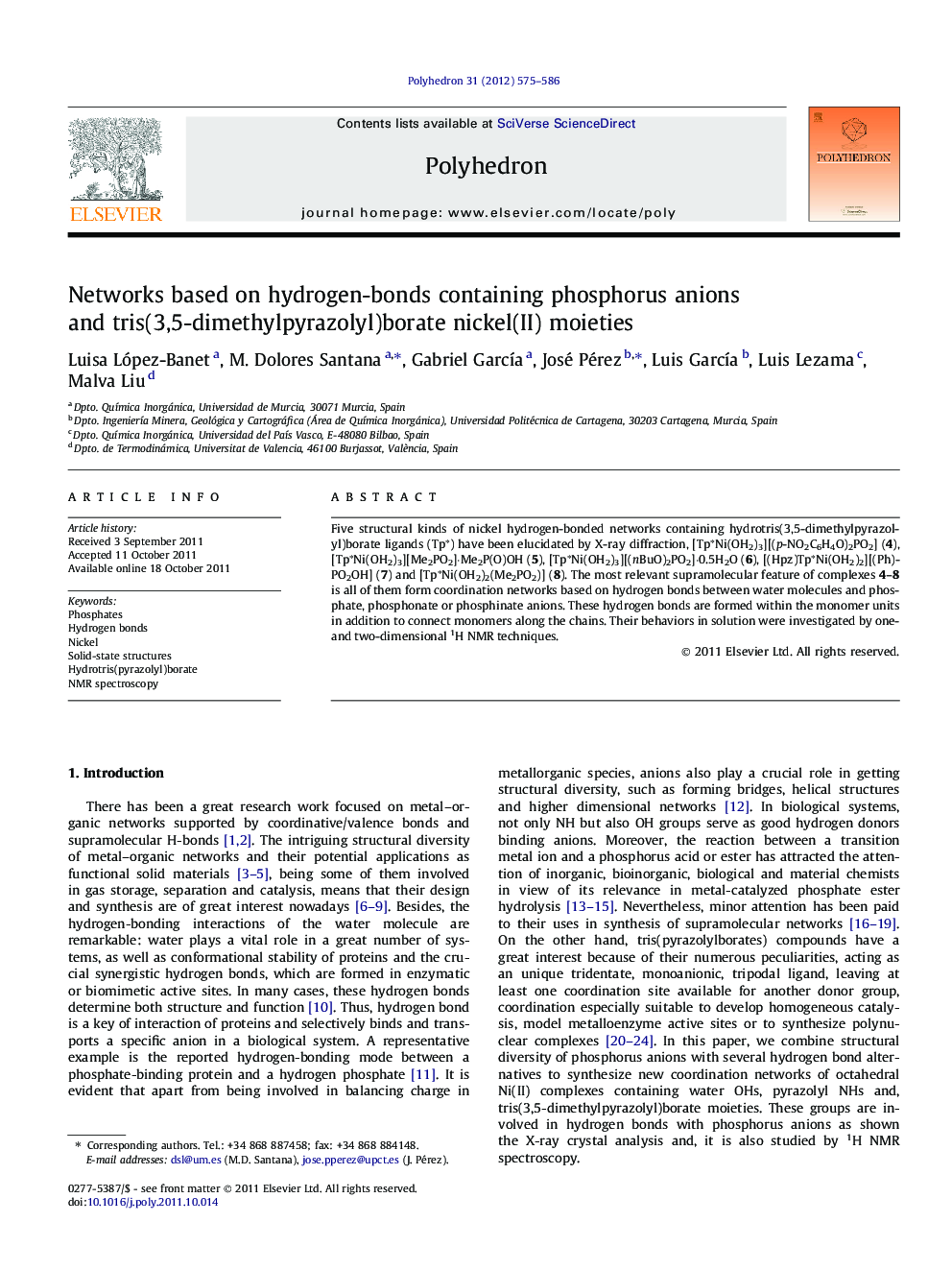| Article ID | Journal | Published Year | Pages | File Type |
|---|---|---|---|---|
| 1338227 | Polyhedron | 2012 | 12 Pages |
Five structural kinds of nickel hydrogen-bonded networks containing hydrotris(3,5-dimethylpyrazolyl)borate ligands (Tp∗) have been elucidated by X-ray diffraction, [Tp∗Ni(OH2)3][(p-NO2C6H4O)2PO2] (4), [Tp∗Ni(OH2)3][Me2PO2]·Me2P(O)OH (5), [Tp∗Ni(OH2)3][(nBuO)2PO2]·0.5H2O (6), [(Hpz)Tp∗Ni(OH2)2][(Ph)PO2OH] (7) and [Tp∗Ni(OH2)2(Me2PO2)] (8). The most relevant supramolecular feature of complexes 4–8 is all of them form coordination networks based on hydrogen bonds between water molecules and phosphate, phosphonate or phosphinate anions. These hydrogen bonds are formed within the monomer units in addition to connect monomers along the chains. Their behaviors in solution were investigated by one- and two-dimensional 1H NMR techniques.
Graphical abstractFive structural kinds of nickel hydrogen-bonded networks have been elucidated by X-ray diffraction. These complexes form supramolecular networks by hydrogen bonds between water molecules and phosphate, phosphonate or phosphinate anions. Their behaviors in solution were investigated by one- and two-dimensional 1H NMR techniques.Figure optionsDownload full-size imageDownload as PowerPoint slideHighlights► Five structural nickel hydrogen-bonded networks are elucidated by X-ray diffraction. ► Supramolecular networks form by H-bonds between water molecules and phosphorus anions. ► Their behaviors in solution were investigated by 1H NMR techniques.
